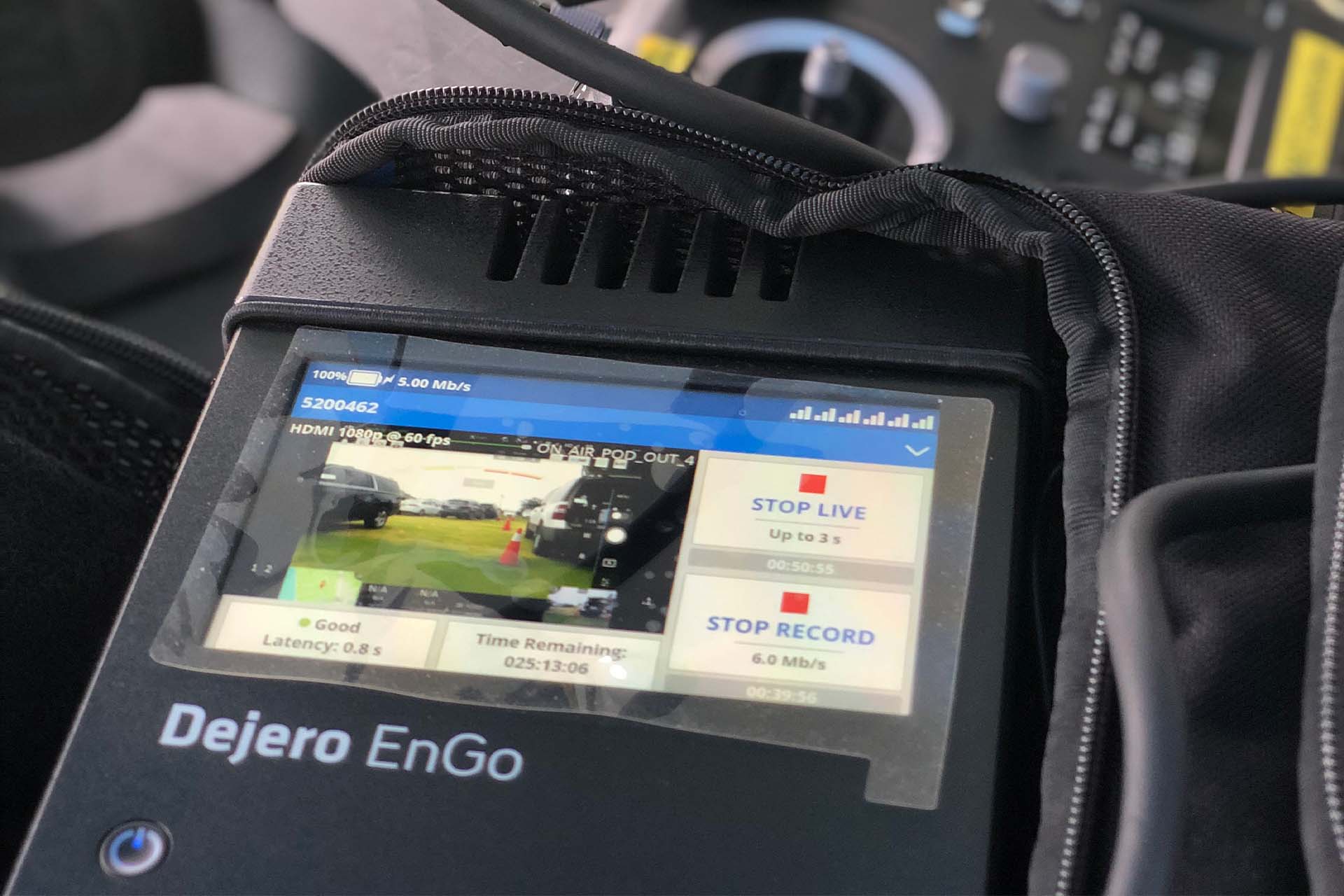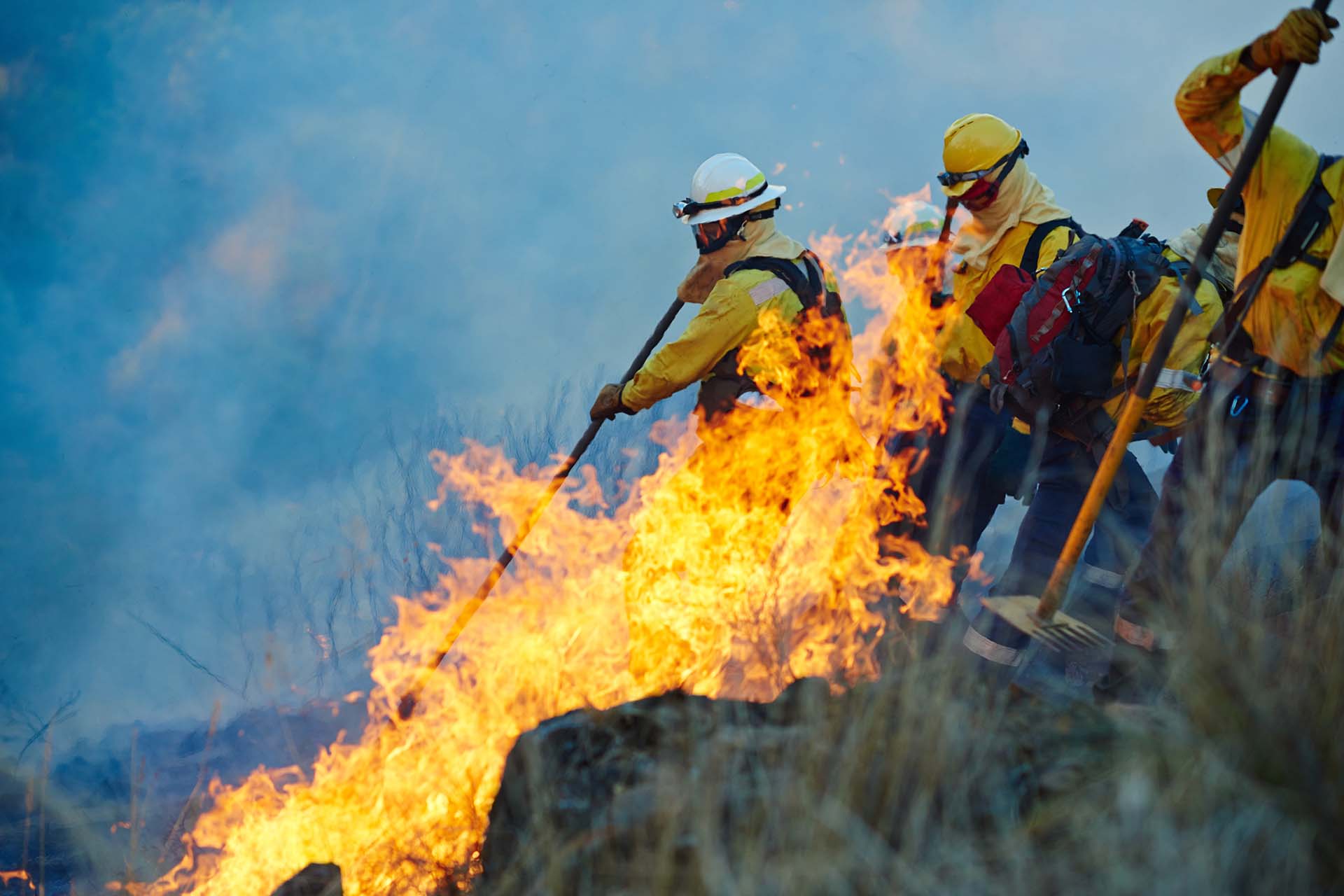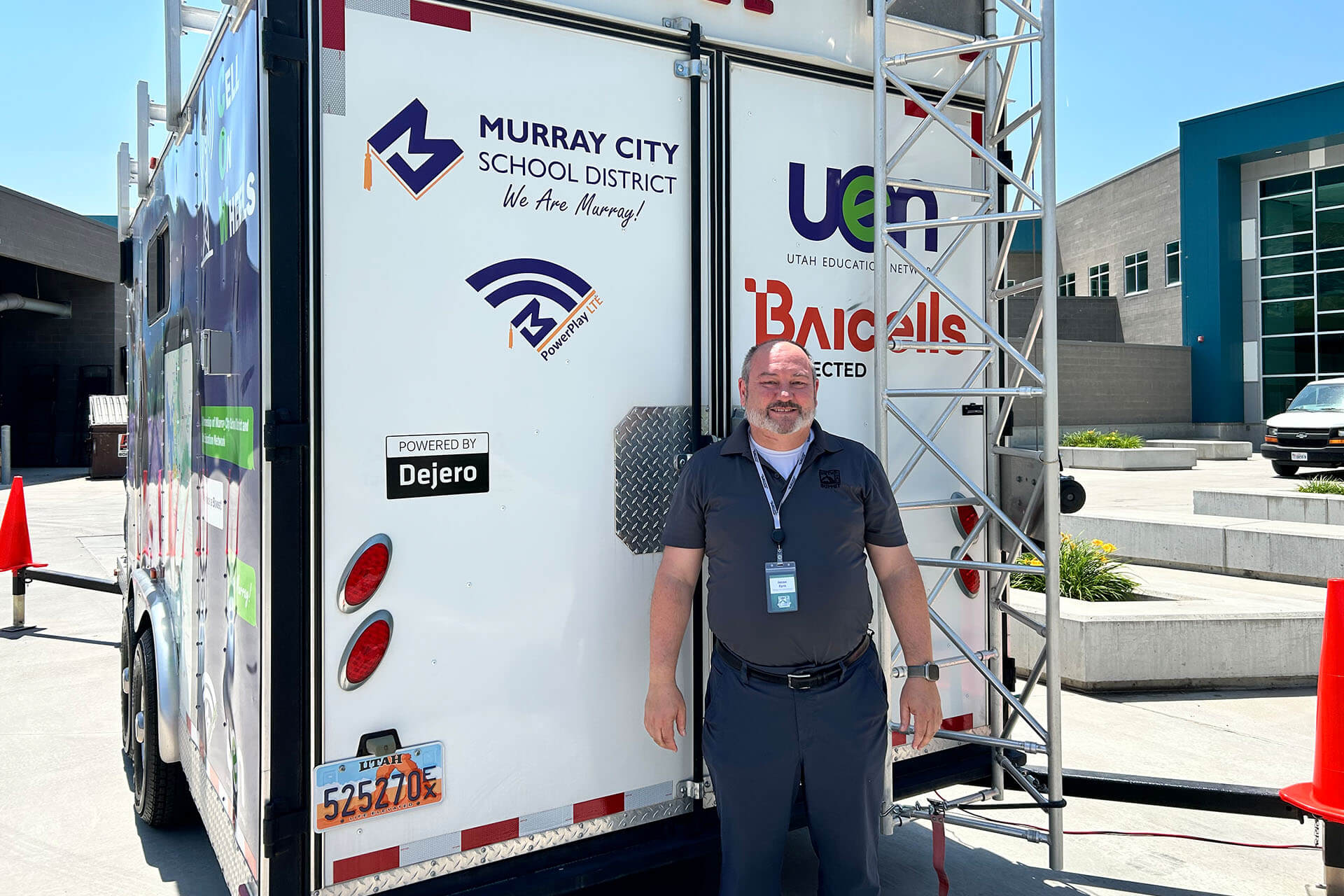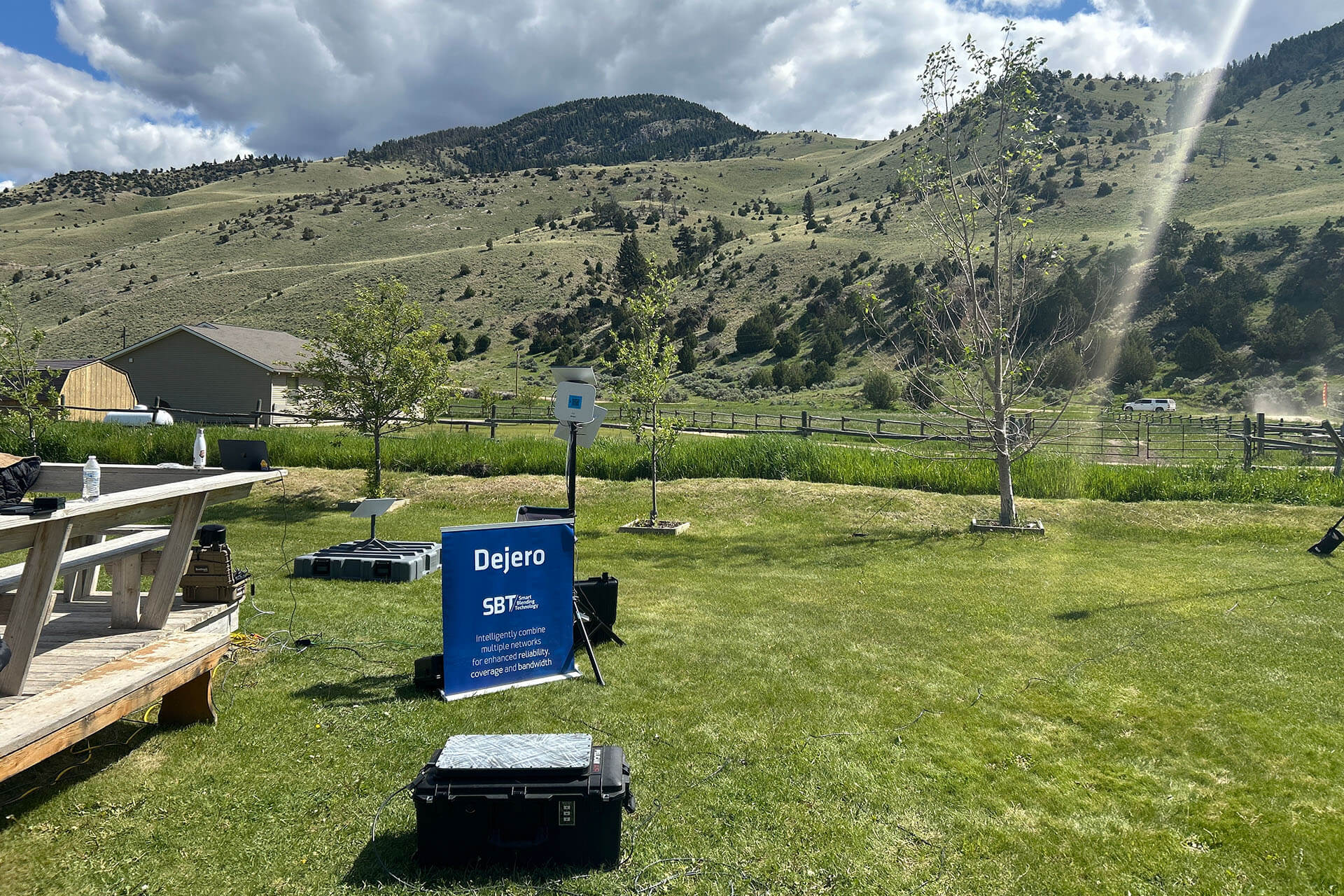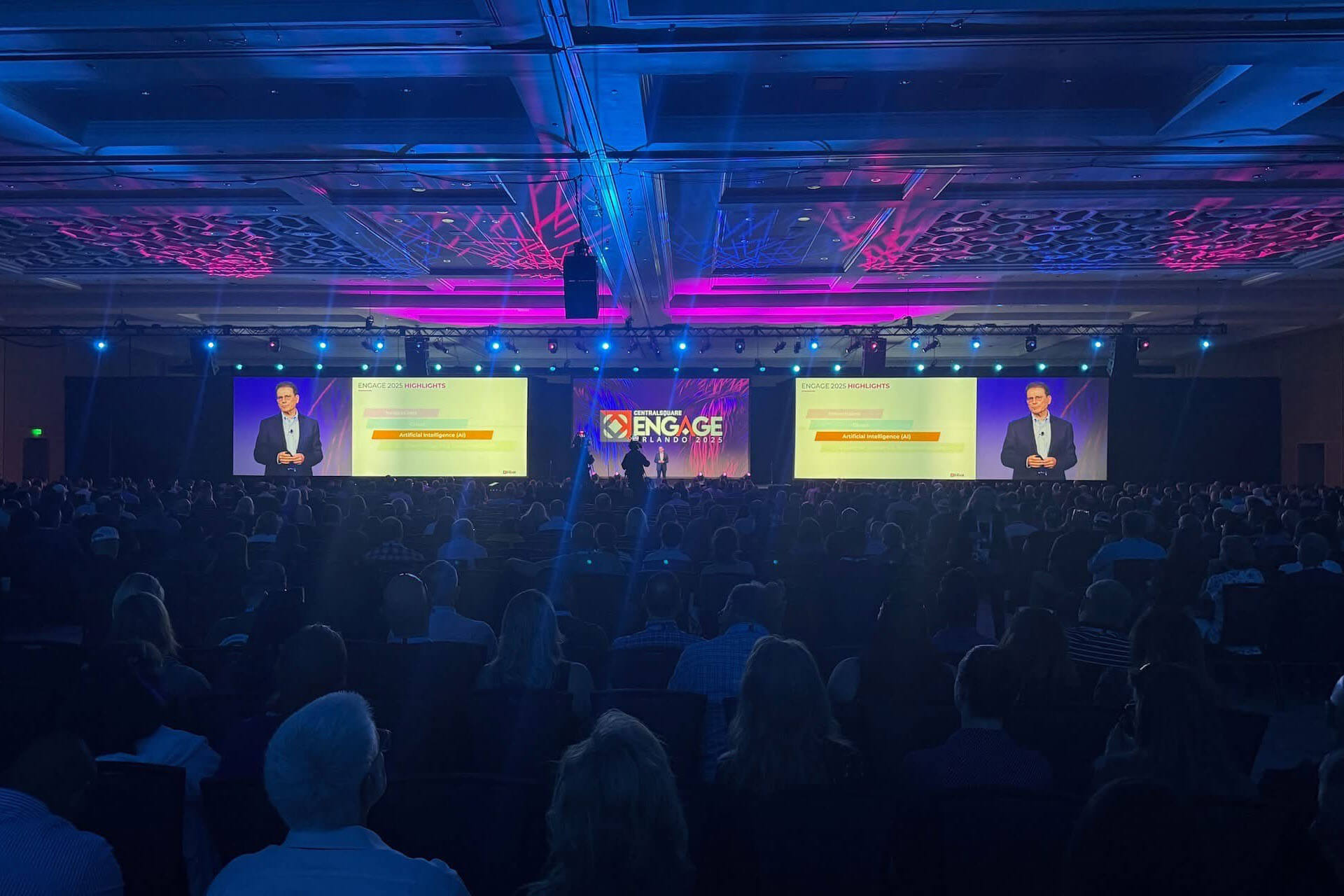Picture this—You’re hiking through the beautiful Apex Mountain park in Colorado Front Range with your dog. Your cell phone is showing no bars. Imagine if you got lost–or worse, slipped and fell or suffered a heart attack. According to Hikers Daily1 there are an estimated 1,000 deaths in U.S. national parks each year.
Lives depend on the ability to communicate—not only is it imperative for the survival of civilians, it’s imperative for Emergency Responders.
Challenging Environments for Emergency Responders
Like many remote, connectivity-deprived terrains, cell coverage is patchy at best across the Apex Mountain park. It is a challenging place to coordinate response teams and equipment in some areas where you can't even make a phone call.
This is why our public safety channel manager, Rory McCabe, purposely chose that location for a hike with his dog, Crux, to host a live demo featuring Dejero mission-critical connectivity via Zoom.
This is a coverage map of two local network carriers and their signal strength around the area. The red and brown sections have little or no signal - which is where Rory’s hiking trail took place.
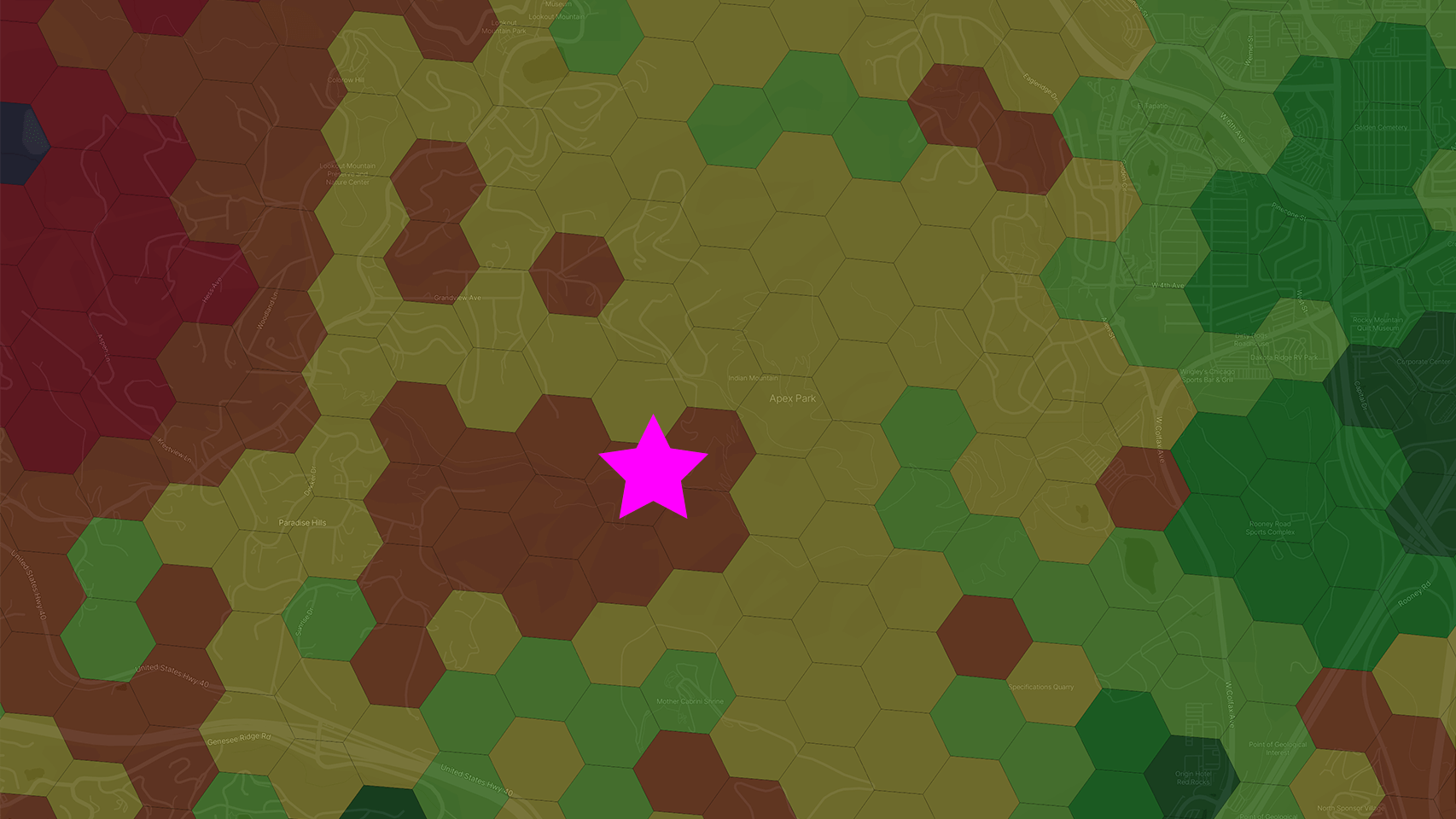
As you can see, this area is problematic. As an emergency responder on a search and rescue mission for example, you never know what the network behavior is going to be like as you’re rushing into a situation. This is why it’s so important to build an appropriate backhaul to enable the seamless engagement of video and audio apps (in this case Zoom).
In this instance, Rory used his smartphone and carried a Dejero EnGo 3 mobile video transmitter loaded with four SIM cards in his backpack for internet backhaul connectivity, to successfully demonstrate how Dejero’s Smart Blending Technology™ helps emergency responders stay connected in critical situations.
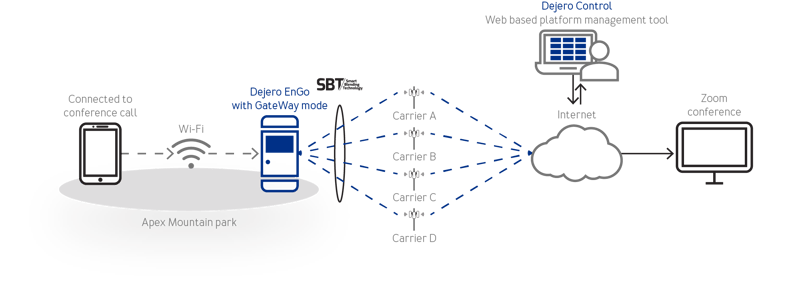
The dangers of relying on a single network
Network carriers all exercise due diligence checks when it comes to signal paths, but sometimes in open space and federal lands, there are limitations on what infrastructure can be built, including the number of cell towers. Plus, mountains are naturally difficult obstacles for data to pass through.
As Rory followed the Apex Mountain park hiking trail, with little or no network connectivity from one single carrier, he used a Dejero EnGo 3 mobile video transmitter for internet backhaul to transmit live audio and video from his smartphone via the Zoom app. All of the remote webinar attendees tuning in remotely were experiencing a smooth, HD feed.
This image shows the UI of the Dejero EnGo 3. The left screen shows the blended throughout and available upload speeds that amounted to just 3.5Mbps. The right screen shows the signal strength of four individual cellular networks.
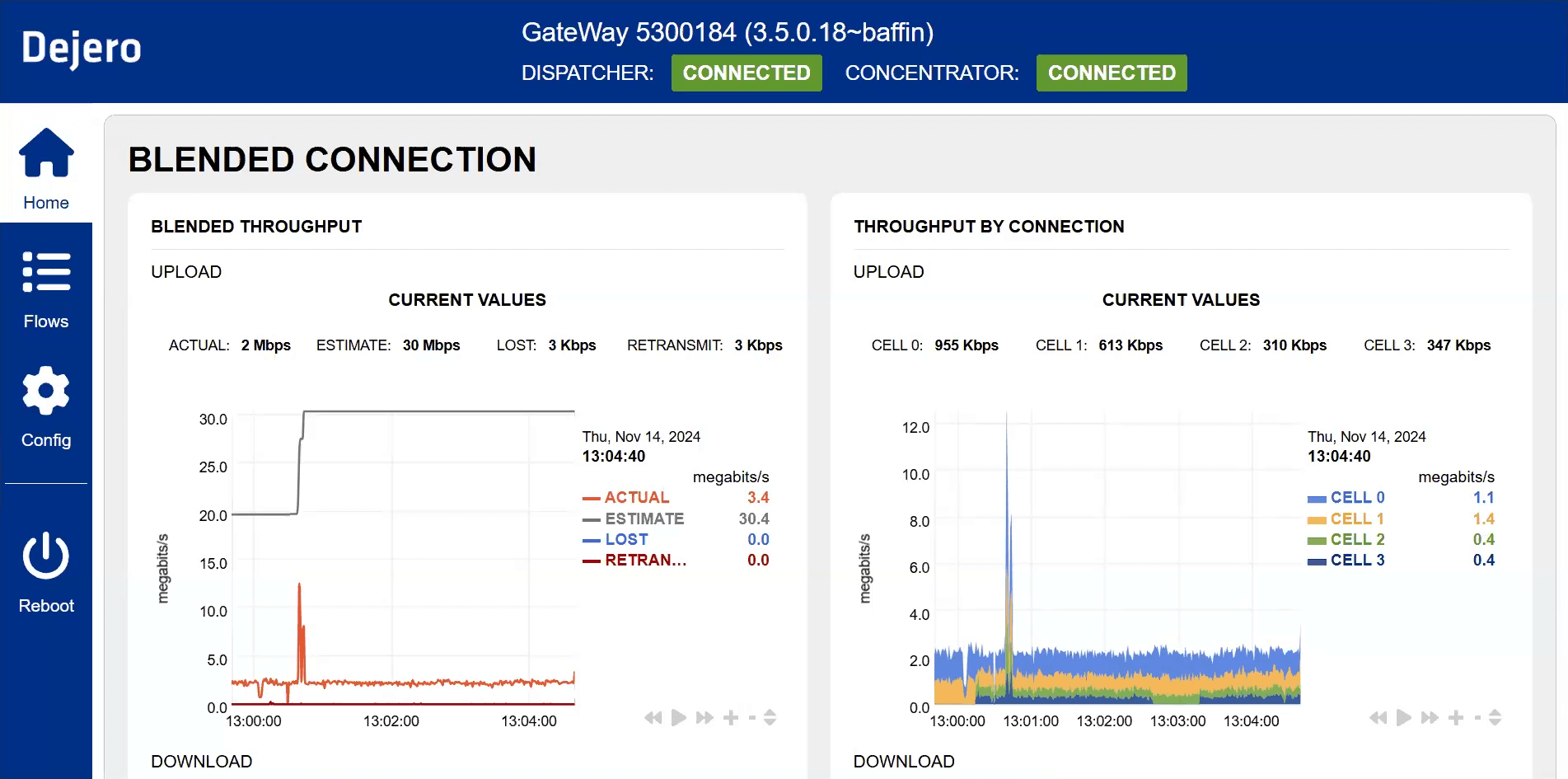
Relying on a single connection for situational awareness, critical communications, and emergency response leaves emergency response teams and residents vulnerable. Dejero Smart Blending Technology aggregates multiple wired (broadband/fiber) and wireless (4G/5G, Wi-Fi, satellite) IP connections into a single service for uninterrupted, mission-critical connectivity.
Failover isn’t good enough
It's important to understand that Dejero technology doesn’t use failover, load balancing, or flow duplication.
The failover process, if one of these carriers were to drop off, would take time to hand over to the backup profile and start retransmitting information, causing a loss of data - which, in emergency scenarios, could be a matter of life and death.
In a load balancing scenario, using two radios to split traffic and fire it across both paths has its benefits. It uses bandwidth for each individual device at the application level and increases throughput because you're not clogging one path with a mix of data. However, they don't talk to each other—there is no unification of that information. I liken it to a 1970s martial arts movie—the mouth is moving but the audio is not syncing. Suppose we have a failure of coverage or a network challenge with one of those radios. In that case, you lose that data—there is no store forward redial. And so, you’re put in a problematic position by compromising the critical communications that are desperately needed.
Flow duplication whereby two or more channels are transmitting the exact same data across multiple pipes at the same time can be problematic. They look at the integrity of the network and, if it detracts from the other priority users that are out there, it restricts how that data is transmitted. Plus they are un-ending streams of data - because they are not broken down to a 'packet' level; one blip, and you lose everything.
Even if you have a reliable carrier, including fixed lines, or priority connection in your area - it doesn’t reduce the fallibility when disaster strikes. Extreme weather - blizzards, wildfires, hurricanes and malicious acts where people cut fibre lines, can cause havoc with connectivity. The same goes for core upload failures and data breaches that can take out communication coverage. But if you have a ‘network of networks’ in place, even when the metrics say it shouldn’t be possible, video and data can be passed in a unique way, a patented way, using Dejero Smart Blending Technology. Effectively, we are performing carrier slicing at a device level.
An Ace up your sleeve
Many Emergency responders work with the PACE model. What is your Primary, Alternative, Contingency and Emergency? The ‘PACE Plan’ pictured below, credited to CISA (Cybersecurity and Infrastructure Security Agency), is in an Emergency Communications Ecosystem designed by SWICS (National Council of Statewide Interoperability Coordinators) and ECCs (Export Control Cooperation) to improve upon emergency communications preparedness capabilities.
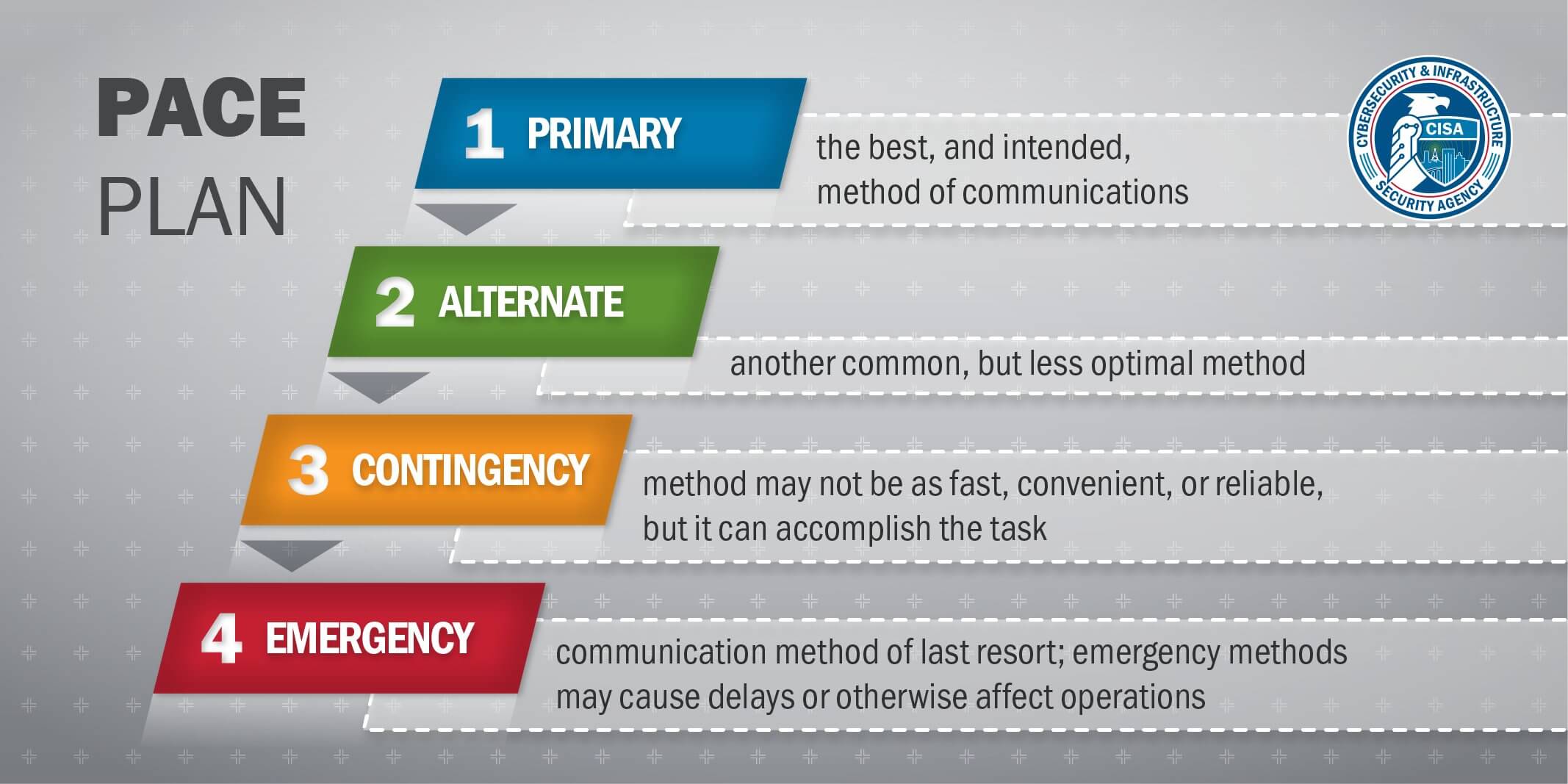
If you rely on a single carrier, failover, load balancing or flow duplication, it breaks the PACE model. Dejero takes on the role of ACE in this model.
Law enforcement will carry a second pair of handcuffs or zip ties, EMS will have more than a few bandages on hand, Firefighters will bring additional backup equipment including axes, hoses and oxygen - all so they can better do their job. If you work in this way for everything else, why would you not work the same way when it comes to communication?
We talk to first responders all the time, and now, at a time when they have less and less - less budget, less people, less labour, sometimes less pay, they tell us they are dealing with higher levels of catastrophe and challenge than ever before. When it comes to communication, they just want it to work. It should no longer be a secondary aspect of your model.
Dropouts that don’t affect your communications?
It’s worth highlighting a couple of events that occurred along Rory’s hiking trail. The screenshot below clearly shows a loss of connection from one of the network paths during the live stream. CELL 0, on the same carrier as CELL 1 has performed solidly solid for the duration - but it had zero data contributed for a period of approx. 1 minute. CELL 2, which is on the same carrier drops out for 30 seconds - however, as you’ll see, when you watch the webinar recording, none of these dropouts had any effect on the actual connection that was carrying Rory's data to the internet for the entire session.
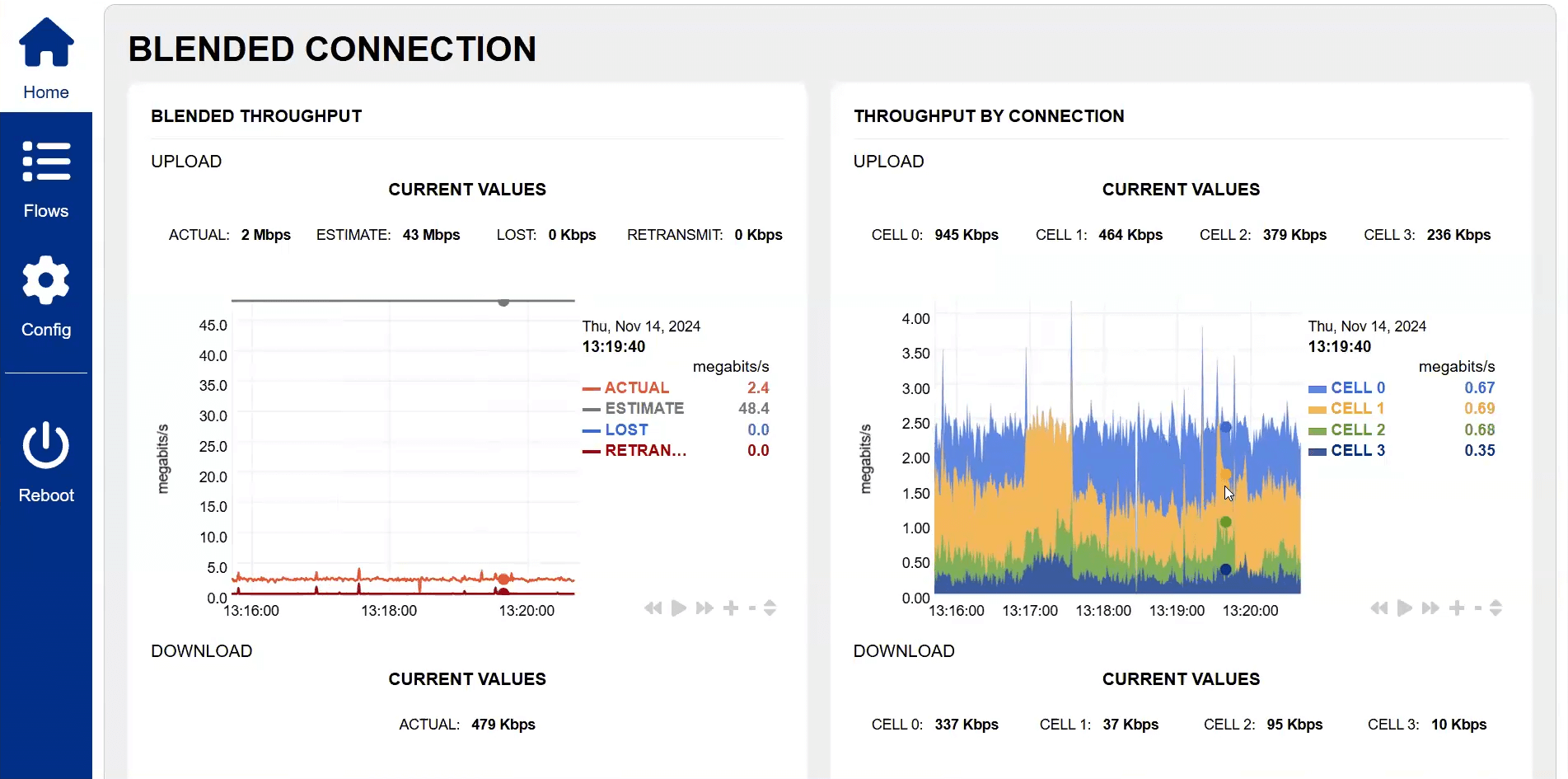
Failover isn't happening here - it is a blending of all of the connections that are available - the loss of the connection is just the loss of one member in the pool that is available, the connection is seamlessly moved over to one of the other members within the pool.
Without connectivity new situational awareness tools are redundant
In the Apex Mountain park area, there are a lot of repeated incidents of mountain bikers getting hurt, breaking legs, arms, etc., requiring EMS to come in with a litter, on single wheels, propped up on shocks. It can take 30 mins to an hour alone to hike the litter to even reach the injured party. But what can happen between finding them, assessing the situation and determining the attention they need and equipment to support them, could be life changing or worse.
The need for more data and video has never been more apparent. Rory’s demo proves that Dejero can stream live video from a place it shouldn't be possible.
UAS, bodycams, dash cams, stationary video on secure trailers, telemetry apps, biometrics can all provide crucial information - but without the connectivity to access this data in real time, all these situational awareness tools aren’t effective as a scene unfolds.
Whatever your organization's role is in a search and rescue, disaster recovery or any other emergency situation, be prepared for your response with Dejero.
Thank you to Rory for trekking through the Apex Mountain park to bring us this live demo.

1https://hikersdaily.com/hiking-injury-statistics/?utm_content=cmp-true

